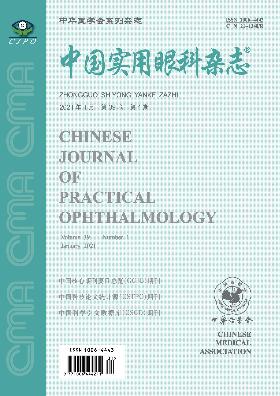Early experience with the femtosecond laser-assisted cataract surgery
引用次数: 0
Abstract
Objective To describe the early experience with the femtosecond Laser-assisted cataract surgery. Methods This study involved 85 continuous patients (114 eyes) who planned to have femtosecond laser-assisted cataract surgeries. All eyes were divided into 2 groups: Group 1 (first 50 eyes) and Group 2 (eyes 51 through 114). All femtosecond laser-assisted (LenSx, Alcon, Fort Worth, TX) cataract surgeries were performed by the same experienced cataract surgeon (also experienced with corneal refractive surgeries). Femtosecond laser procedures included anterior capsulotomy, lens segmentation, and clear corneal incision creation. All abnormalities and complications during the surgeries were recorded. Results The mean age of patients in 2 groups was 60.4±14.9 years and 60.9±16.2 years, respectively. There was no significant difference was found between the 2 groups. The numbers of docking attempts and occurrence rates of subconjunctival hemorrhage of 2 groups were 1.14±0.50 and 1.19±0.53, 22.0% (11 eyes) and 34.4% (22 eyes), respectively. However, both of them showed no significant differences between the 2 groups. The occurrence rates of corneal incision creation assisted with keratome in 2 groups were 26% (13 eyes) and 17.2% (11 eyes), miosis after the laser procedure were 2% (1 eye) and 1.6% (1 eye), anterior capsular tags were 4% (2 eyes) and 3.1% (2 eye), anterior capsular tear were 4% (2 eyes) and 3.1% (2 eyes), posterior capsular tearwere 2% (1 eye) and 0; No significant differences were found in those complication occurrence rates between the 2 groups (P ranged from 0.252 to 0.801). Conclusions FLACS is proved to be very safe for the experienced cataract surgeon, especially for those who also possess rich experiences in corneal refractive surgeries. The learning curve has no significant effect on the abnormalities and complications occurrence during the surgery. Key words: Femtasecond; Cataract; Learning curve; Complication飞秒激光辅助白内障手术的早期经验
目的探讨飞秒激光辅助白内障手术的早期经验。方法对85例(114眼)计划行飞秒激光辅助白内障手术的患者进行研究。所有眼睛分为2组:1组(前50只眼睛)和2组(51 ~ 114只眼睛)。所有飞秒激光辅助白内障手术(LenSx, Alcon, Fort Worth, TX)均由同一名经验丰富的白内障外科医生(也有角膜屈光手术经验)进行。飞秒激光手术包括前囊切开术、晶状体分割术和透明角膜切口术。记录手术过程中所有异常及并发症。结果两组患者平均年龄分别为60.4±14.9岁和60.9±16.2岁。两组间差异无统计学意义。两组结膜下出血发生率分别为1.14±0.50、1.19±0.53、22.0%(11眼)、34.4%(22眼)。但两组间均无显著差异。两组角膜切口辅助角膜切割的发生率分别为26%(13眼)和17.2%(11眼),激光手术后角膜缩小的发生率分别为2%(1眼)和1.6%(1眼),前囊脱落的发生率分别为4%(2眼)和3.1%(2眼),前囊撕裂的发生率分别为4%(2眼)和3.1%(2眼),后囊膜撕裂的发生率分别为2%(1眼)和0;两组患者并发症发生率比较差异无统计学意义(P值为0.252 ~ 0.801)。结论FLACS对于经验丰富的白内障外科医生,特别是具有丰富角膜屈光手术经验的外科医生是非常安全的。学习曲线对手术异常及并发症的发生无显著影响。关键词:飞秒;白内障;学习曲线;并发症
本文章由计算机程序翻译,如有差异,请以英文原文为准。
求助全文
约1分钟内获得全文
求助全文
来源期刊
自引率
0.00%
发文量
9101
期刊介绍:
China Practical Ophthalmology was founded in May 1983. It is supervised by the National Health Commission of the People's Republic of China, sponsored by the Chinese Medical Association and China Medical University, and publicly distributed at home and abroad. It is a national-level excellent core academic journal of comprehensive ophthalmology and a series of journals of the Chinese Medical Association.
China Practical Ophthalmology aims to guide and improve the theoretical level and actual clinical diagnosis and treatment ability of frontline ophthalmologists in my country. It is characterized by close integration with clinical practice, and timely publishes academic articles and scientific research results with high practical value to clinicians, so that readers can understand and use them, improve the theoretical level and diagnosis and treatment ability of ophthalmologists, help and support their innovative development, and is deeply welcomed and loved by ophthalmologists and readers.

 求助内容:
求助内容: 应助结果提醒方式:
应助结果提醒方式:


